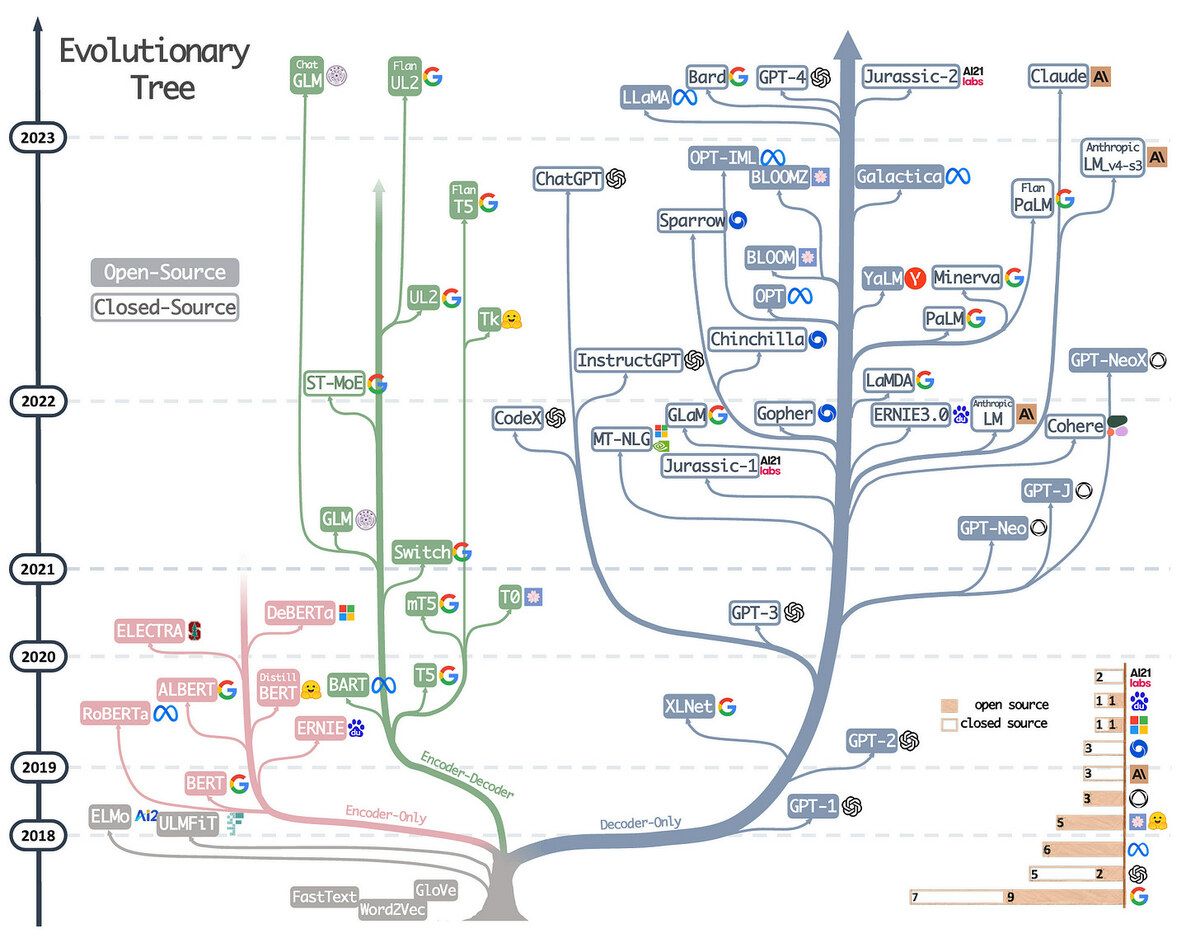Dear Readers,
This week’s tidbits:
Paper of the week: Evolution of AI models
Generative AI and its effects on productivity
Explaining ChatGPT to children
For paid subscribers:
Strategies for learning and knowledge retention
What companies look for in behaviour and cultural fit interview?
When tech layoffs will slow down?
ThoughtLadder is a reader-supported publication. To receive new posts and support my work, consider becoming a free or paid subscriber.
Evolution of AI models
A recent collaborative paper from Amazon, Rice and Texas A&M university surveyed the current prevailing landscape of Large Language Models (LLMs). My take aways from the paper are as following:
Meta is leading the way in terms of open-sourcing their LLM research while other companies have tendency towards close-sourcing their models.
OpenAI consistently maintains its leadership position in LLM space (at the moment)
Critical factors that influence model performance are pre-training data, training/tuning data and test data
In the past few years, decoder-only models have started dominating especially since 2021 e.g. ChatGPT, Google Bard, Meta LLaMA are examples of decoder-only LLMs.
LLMs are generative model types and they usually pre-trained for “predict next word” next word tasks.

The evolutionary tree of modern LLMs traces the development of language models in recent years and highlights some of the most well-known models.
Generative AI and its effects on productivity
A recent study from MIT looked at how generative AI could reduce the productivity inequality between good and average writers. It’s fascinating to see how novel ways are being used to enhance human productivity especially as human-machine complementarity.
In the following chart, results shows that when writers using ChatGPT (treatment group) as part of their writing process spent less time brainstorming and rough editing vs writers not using ChatGPT (control group) spent most of their time rough-drafting.

Effects on Task Structure
Explaining ChatGPT to children
With AI advancements happening every day and becoming more ubiquitous in our daily lives over time, it makes lots of sense to come up with simpler ways to explain what these modern technologies are about and what do they do. This helpful infographic explains ChatGPT in simpler terms which might be useful both for non-tech adults and 12+ years young kids.

Credit: Drik Zee
